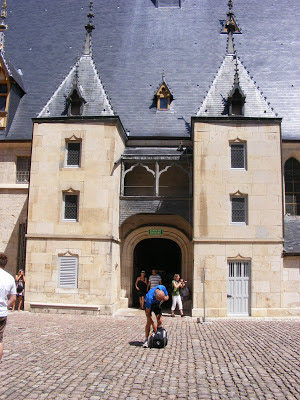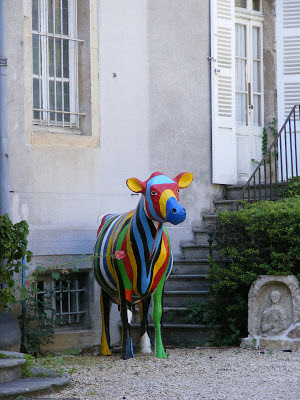This is part of a series discussing The Theory of the Leisure Class, by Thorstein Veblen. His sixth chapter is titled Pecuniary Canons of Taste.
Last week we discussed beauty, expense and serviceability in cutlery, flowers, jewellery and lawns. Veblen also addresses how the expensiveness or exclusivity of various items influence how beautiful we perceive them to be.
Take domestic animals, for example. Barnyard animals such as fowl, pigs or goats are useful and so not particularly enviable as pets. Instead, exotic birds, cats, dogs and fast horses are far more desirable, as they are (or were in Veblen’s time) items of conspicuous consumption. Veblen does argue that the cat isn’t quite as reputable as the others as it can be useful (as a ratter) but also because
“…the cat’s temperament does not fit her for the honorific purpose. She lives with man on terms of equality, knows nothing of that relation of status which is the ancient basis of all distinctions of worth and repute, and she does not lend herself with facility to an invidious comparison between her owner and his neighbors.”
He allows the exception to this might be an Angora cat, on account of being expensive and therefore more beautiful. No doubt today there are other breeds even more expensive and so more desirable, but please don’t try to convince me that those pathetic bald things are anything but a product of sick minds and genetic abuse.
Dogs are better as status symbols, being completely useless. A dog’s ‘unquestioning servitude’ to his master strikes the right note. Veblen is likely not a fan of these creatures, however, saying that the dog is the ‘filthiest of the domestic animals in his person and the nastiest in his habits.’
“For this he makes up in a servile, fawning attitude towards his master, and a readiness to inflict damage and discomfort on all else. The dog, then, commends himself to our favor by affording play to our propensity for mastery, and as he is also an item of expense, and commonly serves no industrial purpose, he holds a well-assured place in men’s regard as a thing of good repute. The dog is at the same time associated in our imagination with the chase — a meritorious employment and an expression of the able predatory impulse. Standing on this vantage ground, whatever beauty of form and motion and whatever commendable mental traits he may possess are conventionally acknowledged and magnified. And even those varieties of the dog which have been bred into grotesque deformity by the dog-fancier are in good faith accounted beautiful by many. These varieties of dogs — and the like is true of other fancy bred animals — are rated and graded in aesthetic value somewhat in proportion to the degree of grotesqueness and instability of the particular fashion which the deformity takes in the given case.”
So nothing has changed then. Any attention given the dog is useless and without gain as well, so that devotion to one’s dogs also fits with the canon of expensiveness.
Of course fast horses are expensive, wasteful and useless in productive terms. Horse racing is aesthetically pleasing and therefore popular. While horses are not servile in the way that dogs are, it is gratifying to the horse owner to have a horse that can beat the neighbour’s horse, much in the same way that larger gems or bigger houses are gratifying, in that they feed the owner’s sense of aggression and dominance. Of course, race horses are unsuited by nature of their build and temperament to doing any productive work.
I’m sure it will be a gross exaggeration, but I’ll make the claim anyhow that class-conscious folks here in Britain are keen to establish themselves as ‘horsy’ if they can at all stretch to the claim. A women I’d just met one evening told me out of the blue that since retiring she’d gone back to riding horses, something she’d missed since her childhood. She didn’t actually smirk when she said it, but something about the way she shifted in her chair made me think of the word ‘preen’. Funny enough, Veblen says that
“In this country [the US], for instance, leisure-class tastes are to some extent shaped on usages and habits which prevail, or which are apprehended to prevail, among the leisure class of Great Britain. In dogs this is true to a less extent than in horses.”
Apparently, even if an English horse isn’t as beautiful as an American horse, the English one will be preferred as ‘reputably correct, if not aesthetically true’ and this applies to all things horseman-like, the clothes, the riding method, the tack, etc.
When we apply the canons of pecuniary taste to women, Veblen says
“It is more or less a rule that in communities which are at the stage of economic development at which women are valued by the upper class for their service, the ideal of female beauty is a robust, large-limbed woman. The ground of appreciation is the physique, while the conformation of the face is of secondary weight only.”
Certainly during the Victorian era, women were expected to bear a lot of children in order to have a male heir in a time of high infant mortality. If that is what Veblen meant by ‘service’ then perhaps he is correct. There was a time during the late 18th century when being very thin and pale was fashionable and the flimsy clothing styles seemed to help women to achieve the frail health required to be stylish; I'm not sure if Veblen's observation holds true during that period.
Older novels tell us that girls were keen to have a ‘nice nose’, 'soft hands' or ‘bright eyes’ but I couldn’t comment on whether it was in the past more important to have a pretty face or a good figure. However, we do know that in poorer societies where food is dear, a woman with a plump figure has been considered more attractive than a skinny one. The opposite is true (at least amongst women’s opinions) in developed societies where food is plentiful. I won’t try to debate why so many of us wrestle to keep a healthy weight, only to say that whatever option is the more expensive, that is the one held in the highest esteem.
Other markers of wealth that have been considered beautiful are tiny feet, dangerously high heeled shoes, hobbling or tight skirts, extraordinarily long fingernails, painfully tight stays or corsets, ridiculous bustles, very long and full skirts, extremely tall hair dos and/or hats, fine and impractically fragile clothing. All are markers and makers of women who are useless, non-productive show pieces for the purpose of enhancing the reputation of their men. To have usable feet, a normal waistline, to wear trousers, etc., were considered vulgar, common and indecent in spite of the fact that many of these fashionable and expensive requirements involved a hideous distortion of the female form.
“But the requirements of pecuniary reputability and those of beauty in the naive sense do not in any appreciable degree coincide. The elimination from our surroundings of the pecuniarily unfit, therefore, results in a more or less thorough elimination of that considerable range of elements of beauty which do not happen to conform to the pecuniary requirement.”
So, I gather, is Veblen’s explanation for why some really ugly things are sometimes considered to be ‘beautiful’.
























































